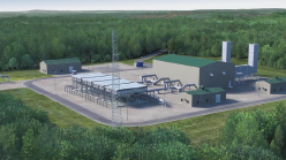Despite the significant air emissions requirements already in place, coalfired generation from existing plants is generally the cheapest way to generate electricity in the United States. For this reason, these plants constitute the core of the nation’s baseload generation.
Competition and pressure for lower prices in the future will likely favor coal since many plants have a significant margin between expected costs and anticipated market prices for electricity. As a result, coal is expected to remain the largest single source of electricity generation in the United States.
This report evaluates the vulnerability of coal-frred power under a total of five unique scenarios: three alternative approaches to controlling utility nitrogen oxide (NOx) emissions and two carbon dioxide (CO2) control scenarios that reflect possible future commitments to reduce greenhouse gas emissions under the Framework Convention on Climate Change.
Stricter NOx emissions control requirements could result in between 3 percent and 9 percent of existing coal-fired capacity (9 GW to 28 GW) becoming vulnerable to shutdown by 2007 due to increased costs of emissions controls pushing production costs above regional market prices for electricity.
Assuming that all of these vulnerable plants shut down and that their combined generation is replaced with natural gas units-which we do not believe is a realistic scenario-there would potentially be opportunities for the supply of between 0.26 and 0.88 trillion cubic feet (tcf) of natural gas in 2007, depending on the manner in which the NOx controls are implemented. This would amount to between 8 percent and 25 percent of all natural gas used for electricity generation in 1995.
Policies to control CO2 emissions will have a dramatic impact on coalplant operating costs that largely overshadows the effect of NOx control strategies. If the United States signs an international treaty calling for reductions in CO2 and other greenhouse gas emissions to 1990 levels, one plausible scenario would place 21 percent of existing coal capacity (62 GW) at risk. A more costly CO2 control scenario investigated in this study found that as much as 61 percent of existing coal capacity (183 GW) may be vulnerable, although we do not expect that such a large share of existing capacity could realistically be forced out of the market.
Under the two CO2 control scenarios, using new natural gas units to replace generation fiom vulnerable plants could create a potential for between 2.2 tcf and 7.6 tcf of new gas supply.
Table ES-1 summarizes the vulnerability of coal-fired power and the potential increase in natural gas demand for each of the five scenarios evaluated in this study.
Coal’s relative vulnerability under the five scenarios is further illustrated in Figure ES- 1.
In addition to the aggregate results, this study also identified regional variations in vulnerability and natural gas opportunities. As shown in Figure ES-2, the most important regions for potential gas demand are generally between the Appalachians and the Mississippi River. These regional results hold for both the NOx and the CO2 control scenarios, although the impacts generally become less pronounced in the more costly scenarios.





